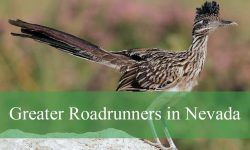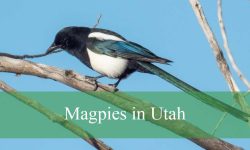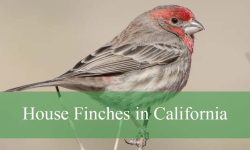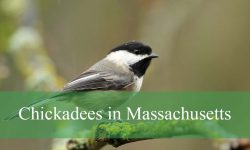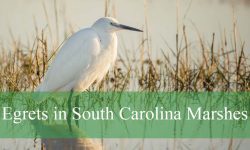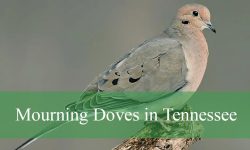Grackles are some of the most misunderstood birds in Oklahoma. Their glossy feathers, piercing eyes, and bold calls echo across city parks, farmlands, and wetland edges. Many Oklahomans see them gathering in large flocks at dusk or striding confidently across parking lots without realizing how complex their behaviors truly are.
These birds are not simply noisy residents of urban centers. Grackles possess remarkable intelligence, vocal flexibility, social coordination, and environmental adaptability. They navigate Oklahoma’s unpredictable weather with ease. They thrive in rural, suburban, and urban landscapes. They interact with other birds in ways that reveal deep ecological connections.
This article explores the hidden facts about grackles in Oklahoma that most people never hear about. Their behaviors, adaptations, feeding habits, nesting strategies, flock dynamics, and seasonal changes reveal a bird whose daily life is far more fascinating than its reputation suggests.
Understanding Grackles in Oklahoma

What Grackles Really Are
The most widespread species in Oklahoma is the great tailed grackle. Its long keel shaped tail, iridescent plumage, and upright posture create a commanding presence. Males display shimmering blues and purples in sunlight. Females show warm brown tones that blend with grasses and open fields.
Grackles belong to the blackbird family but behave far more intelligently than many birds in this group. Their problem solving skills, vocal versatility, and social complexity resemble traits seen in corvids.
Why Oklahoma Is Ideal Habitat
Oklahoma’s landscapes offer everything grackles need. Open fields provide insects. Wetlands provide water and nesting trees. Cities offer food scraps and roosting structures. The state’s warm summers and mild winters allow year round residency for many populations.
Grackles adjust their behavior to match changing seasons. They shift diets, flock sizes, and movement patterns depending on weather and resource availability.
Where They Live Across the State
Grackles appear in nearly every region of Oklahoma. They occupy urban centers like Oklahoma City and Tulsa. They forage in agricultural fields across the central plains. They roost in trees along river corridors. They gather in wetlands of eastern Oklahoma and occupy desert edge shrublands in the west.
Their success stems from their flexibility and boldness.
Hidden Behaviors You Never Knew
Their Curiosity Drives Their Intelligence
Grackles investigate anything new. A dropped object, a shiny item, a discarded food wrapper, or a puddle after rain all attract immediate attention. Curiosity helps them locate food sources and understand environmental changes.
They Use Tools in Subtle Ways
Some grackles manipulate objects or use their bills to pry open containers. Though not tool users in the traditional sense, their interactions with objects reveal advanced learning skills.
Their Social Communication Is Complex
Grackles use body postures, wing movements, and tail positions to communicate hierarchy. Dominant males tilt their heads upward and open their wings slightly when asserting authority. Subordinates adjust posture to avoid conflict.
Anatomy That Supports Their Lifestyle
Long Strong Bills
Their bills break open insects, seeds, fruits, and human food waste. The structure allows precision and power which helps them exploit many food types.
Iridescent Feathers
Grackle feathers appear glossy black from a distance but shimmer with blues and purples in direct sunlight. This iridescence plays a role in courtship displays and territorial signaling.
Long Tail for Maneuverability
The great tailed grackle’s tail acts as a rudder that aids in balance, flight control, and sudden directional changes.
Adaptable Feet
Their feet grip branches, fences, reeds, and even slippery metal surfaces. They can walk, hop, or strut with confidence across varied terrain.
Feeding Habits of Oklahoma Grackles
An Omnivorous Diet
Grackles eat insects, grains, seeds, fruits, amphibians, small fish, worms, and occasional food scraps. Their diet changes depending on locality.
In urban areas they forage for crumbs, spilled grain, and insects attracted to lights.
Insect Specialists in Summer
During Oklahoma’s hot summers insects peak. Grackles hunt grasshoppers, beetles, caterpillars, and spiders. They often feed in grassy fields or along wetland edges.
Their ability to capture large insects supports rapid growth in nestlings.
Foraging in Agricultural Areas
In farmlands grackles feed on spilled grain or insects disturbed by agricultural machinery. They follow tractors to capitalize on exposed prey.
Winter Feeding
Winter food becomes scarcer. Grackles rely heavily on grains, seeds, berries, and any available human related food sources. They forage near cattle feed troughs, barns, and backyard feeders.
Foraging Techniques Few People See
Ground Walking
Grackles prefer walking to hopping. They stride with confident steps scanning the ground for insects or seeds.
Water Wading
In wetlands grackles walk in shallow water to catch insects or small aquatic creatures.
Coordinated Flock Feeding
Flocks spread across fields in loose grids. Each bird scans a small area. This cooperative pattern ensures efficient coverage of large spaces.
Opportunistic Feeding
Grackles explore new food sources quickly. Fallen fruit, fresh plowed soil, shallow puddles after storms, and newly sprouted grasslands all attract immediate interest.
Vocalizations and Communication
Their Voices Are Unusually Varied
Grackles produce whistles, squeaks, croaks, rattles, and long metallic notes. Males often sing from high perches.
Vocal Mimicry
Some individuals mimic sounds from other birds or the environment. This behavior reflects advanced learning.
Social Calls
Short calls maintain flock cohesion. Alarm calls warn about predators. Soft conversational notes occur while foraging in groups.
Grackle Social Structure
Loose Flock Organization
Grackles form social groups that fluctuate in size. Flocks merge, split, and reorganize depending on food availability.
Dominance Hierarchy
Dominant males occupy prime feeding spots. Subordinates wait or feed at edges.
Dominance is signaled through posture, vocalizations, and tail movements.
Strong Pair Bonds
Despite flocking behavior, mates maintain close bonds during the breeding season. Pairs communicate constantly with soft calls.
Nesting and Breeding Behavior
Selecting a Nest Site
Grackles nest in trees, shrubs, reeds, bridges, and even human structures. They choose sites close to water or food resources.
Nest Building
Females build woven cup shaped nests from grasses, plant fibers, and small twigs. Males assist by bringing materials.
Egg Laying
Females lay two to six eggs. Incubation lasts around two weeks. Both parents contribute to feeding chicks after hatching.
Raising Young
Chicks grow quickly on a diet of insects. Parents make constant trips between feeding areas and the nest. Young birds fledge in about three weeks but continue to follow parents for additional guidance.
Roosting Behavior in Oklahoma
Massive Winter Roosts
Oklahoma is known for enormous grackle roosts. Thousands of birds gather in trees near wetlands, parks, and agricultural zones.
Roost Site Choice
Grackles choose roosts that offer shelter, warmth, and access to nearby food. Areas near lakes, rivers, and suburban parks are common.
Roost Communication
Evening flights toward roosts form dramatic swirling patterns. Vocalizations become louder as birds settle in.
Seasonal Rhythms in Grackle Life
Spring
Breeding begins. Males display iridescent plumage. Females build nests. Territories form in trees and reeds.
Summer
Insects peak. Chicks fledge. Grackles forage in fields, wetlands, and suburbs.
Autumn
Flocks grow larger. Birds gather in agricultural areas to feed on leftover grains. Roost sizes increase dramatically.
Winter
Large communal roosts dominate behavior. Foraging becomes opportunistic. Birds spread across urban and rural landscapes during the day.
Grackles Across Different Oklahoma Environments
Urban Centers
Cities offer constant food sources and sheltered roosts. Grackles walk confidently across parking lots and forage near restaurants, parks, and dumpsters.
Suburbs
Neighborhood lawns, backyard feeders, and ornamental trees attract grackles year round.
Farmlands
They follow plows, forage in grain fields, and search along irrigation ditches.
Wetlands
Wetlands provide insects, amphibians, and safe nesting sites. Grackles use cattails and reeds for shelter.
Grasslands
Open grasslands host insect rich feeding grounds promising abundant protein.
Interactions With Other Wildlife
With Blackbirds
Grackles often share fields with red winged blackbirds. Each species has slightly different feeding niches which reduces conflict.
With Songbirds
Grackles and sparrows often forage in the same areas. Songbirds remain alert and avoid direct competition.
With Raptors
Hawks and owls occasionally prey on grackles. Flocks respond with alarm calls and evasive flight.
With Mammals
Grackles follow cattle, horses, and bison. They catch insects flushed by hooves.
Myths and Misconceptions About Grackles
Myth: Grackles Only Live in Cities
They thrive in wild grasslands, wetlands, and farmlands.
Myth: Grackles Are Aggressive Toward All Birds
Their interactions are mostly defensive or competitive, not aggressive.
Myth: They Are Purely Opportunistic Feeders
They rely heavily on natural foods including insects, fruits, and seeds.
Myth: Grackles Have No Ecological Value
They control insect populations and disperse seeds across landscapes.
Ecological Importance in Oklahoma
Insect Regulation
Grackles consume large numbers of grasshoppers, beetles, and moth larvae. Their predation helps maintain balance in agricultural ecosystems.
Seed Dispersal
When eating wild fruits and berries, grackles distribute seeds across fields and forests.
Prey for Predators
Grackles support hawks, owls, and foxes in Oklahoma ecosystems.
Wetland Ecosystem Health
Their presence near wetlands reflects strong insect populations and stable vegetation.
Adaptability in Changing Landscapes
Urban Growth
Grackles adjust to development by shifting roosts and exploring new feeding sites.
Climate Shifts
Warmer winters support larger populations. Changing rainfall patterns alter insect availability but grackles adapt quickly.
Habitat Fragmentation
Grackles use fragmented patches effectively. Even small green spaces support their daily routines.
Daily Life of a Grackle in Oklahoma
Sunrise
Grackles leave roosts in noisy waves. They spread across landscapes toward feeding areas.
Midmorning
Flocks forage in fields, lawns, and wetlands. They coordinate movement through calls.
Afternoon
Activity slows during heat. Birds rest in shaded areas or near water.
Evening
Flocks reconvene and fly toward roosts. Air fills with the sound of calls and swirling wings.
Night
Grackles settle into tight roosts where warmth and safety improve overnight survival.
FAQs About Grackles in Oklahoma
Are grackles common in Oklahoma
Yes. They are widespread across urban, suburban, and rural areas.
What do grackles eat
Insects, seeds, grains, fruits, and varied natural foods.
Do grackles migrate
Many remain year round. Some populations shift locally depending on weather.
Why do they gather in large flocks
Large flocks provide warmth, information sharing, and predator awareness.
How long do grackles live
Many live five to seven years in the wild.
Do grackles nest in Oklahoma cities
Yes. Trees, shrubs, and human structures offer nesting sites.
Conclusion
Grackles in Oklahoma are far more fascinating than their everyday presence suggests. Their intelligence, social coordination, adaptability, and ecological roles shape landscapes across the state. They thrive in diverse environments from wetlands to cities and display behaviors that reveal an impressive awareness of their surroundings.
Understanding their hidden lives provides new appreciation for these intriguing birds. Whether gathering in huge dusk roosts or striding boldly across an open lawn, grackles bring energy, resilience, and complexity to every corner of Oklahoma.

